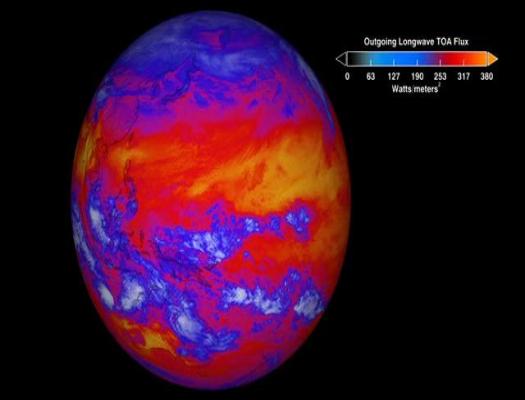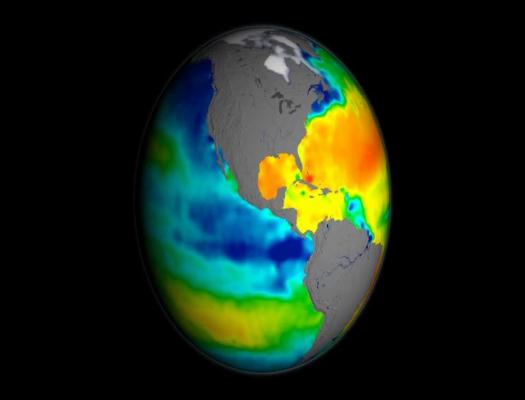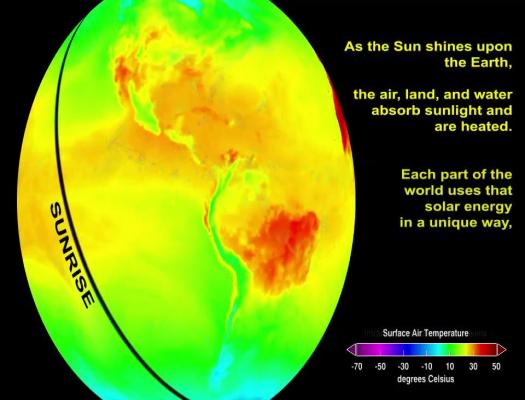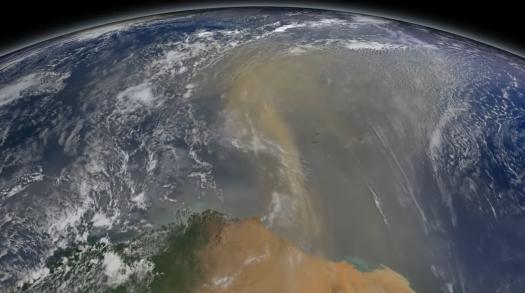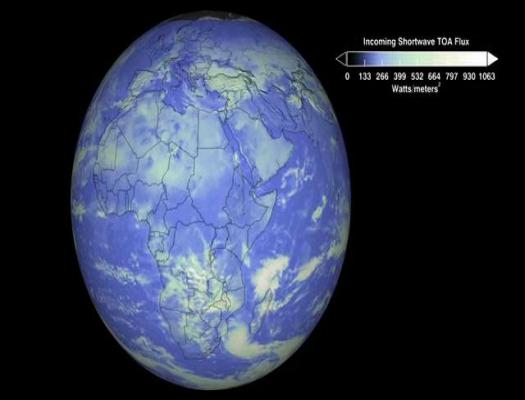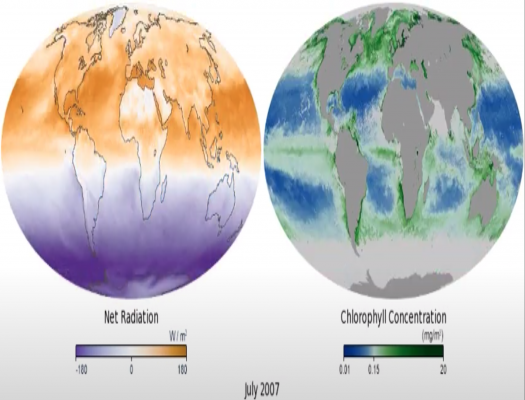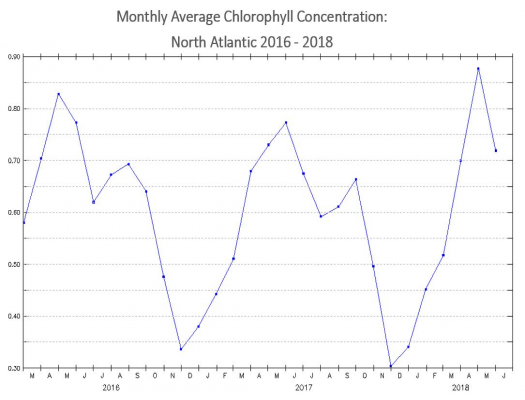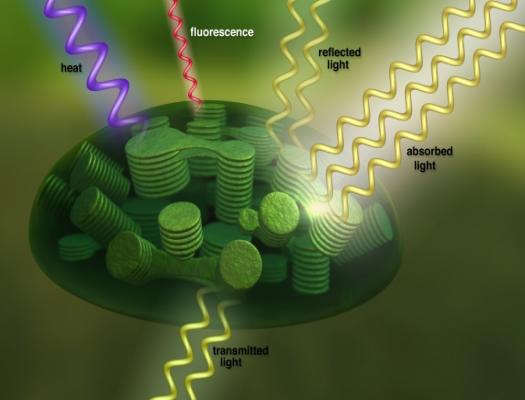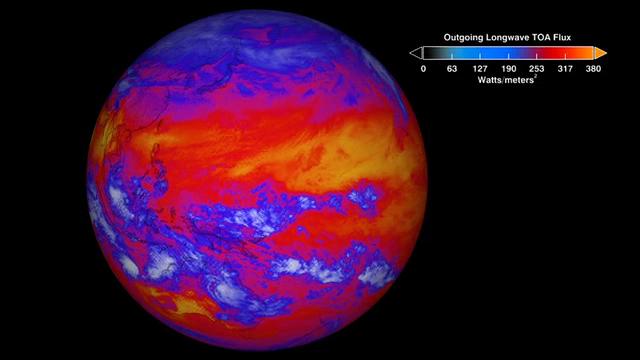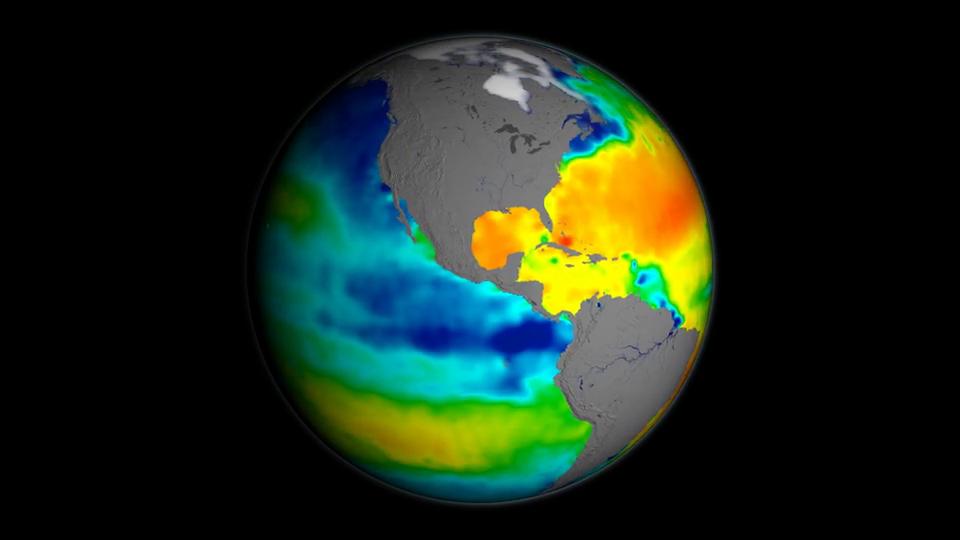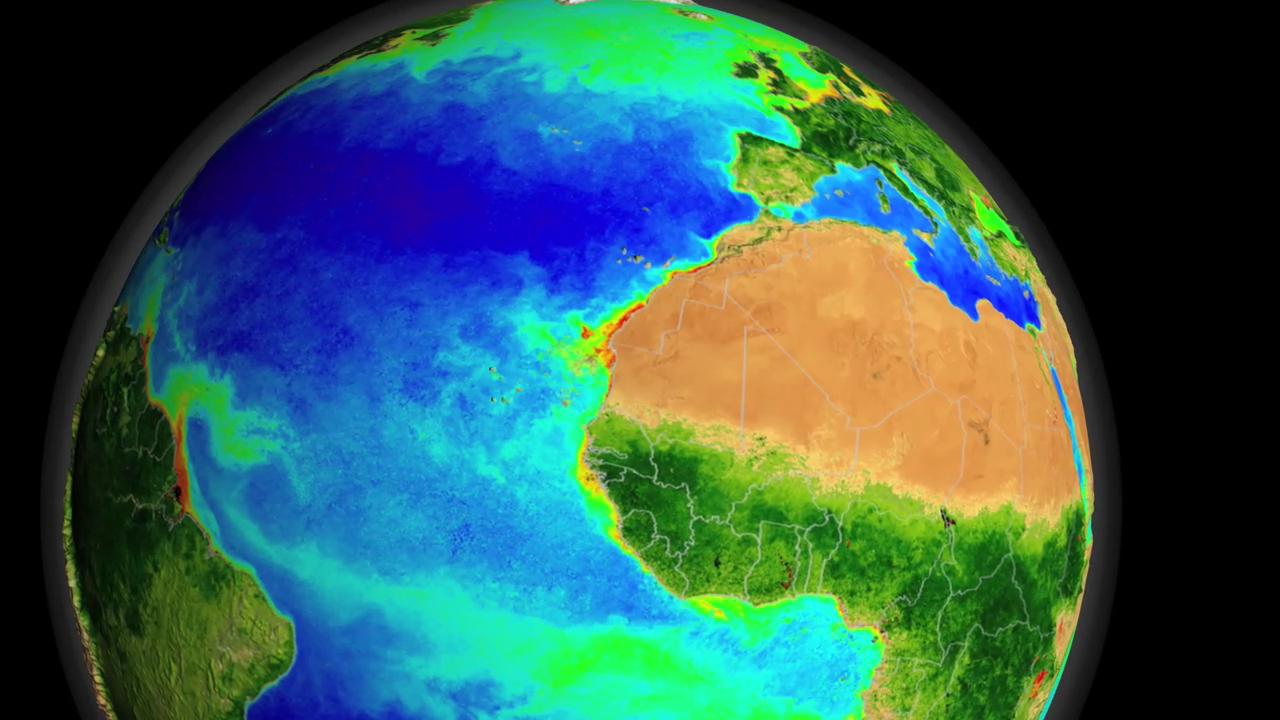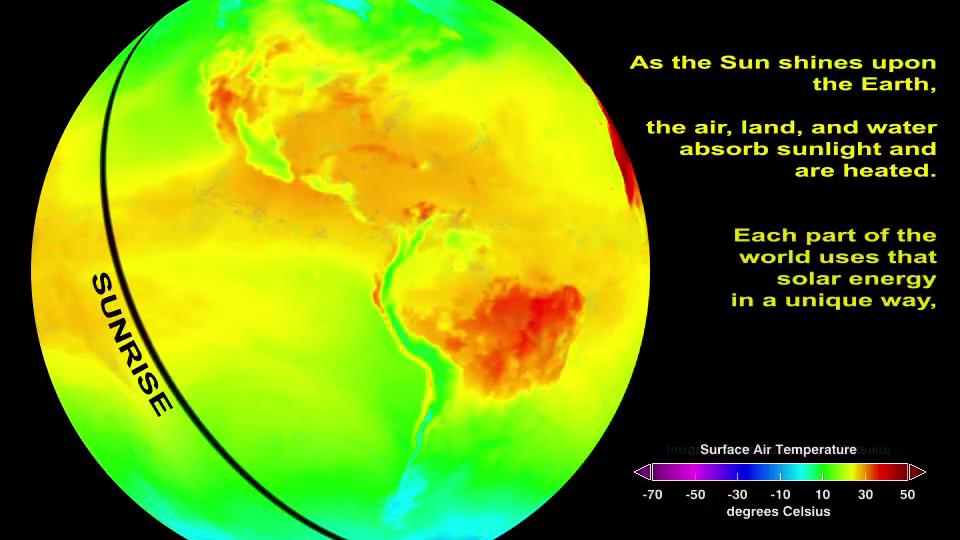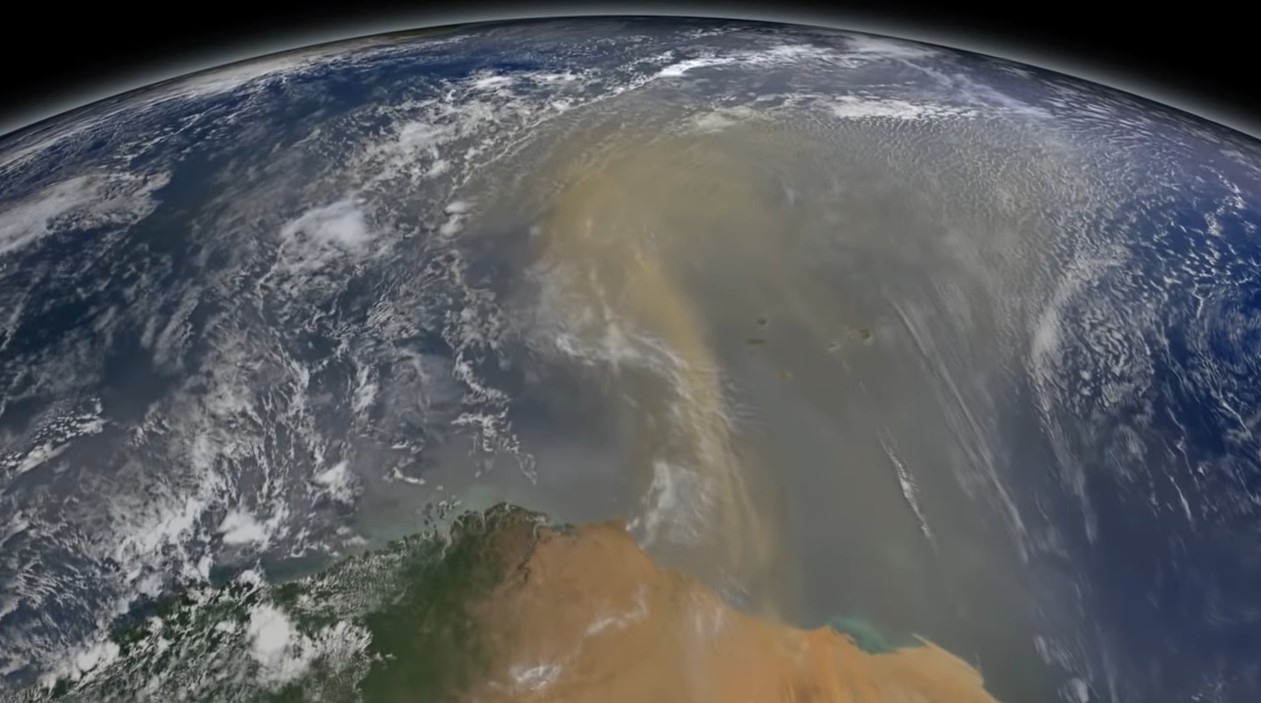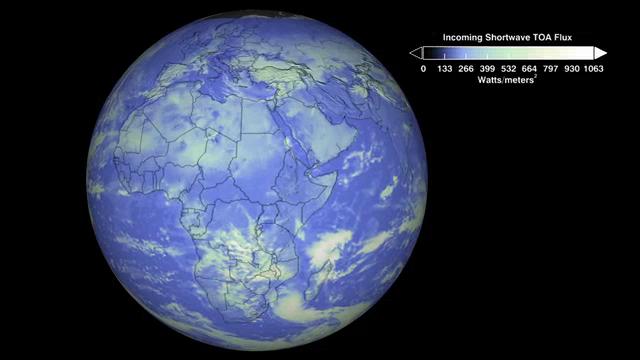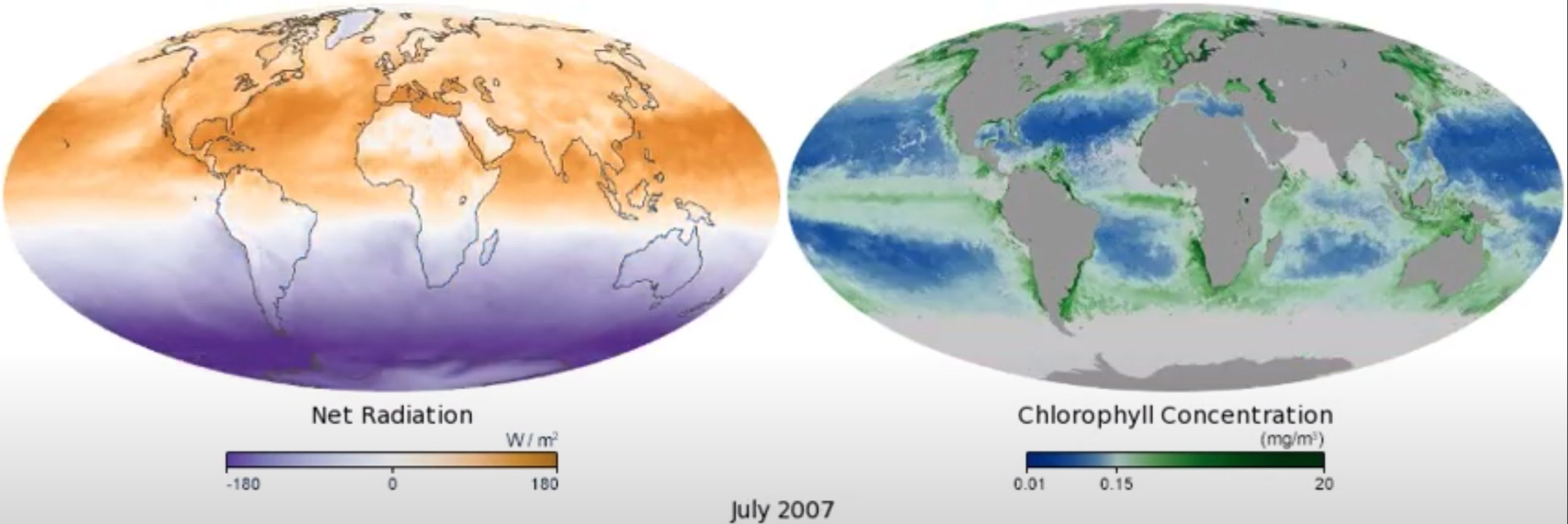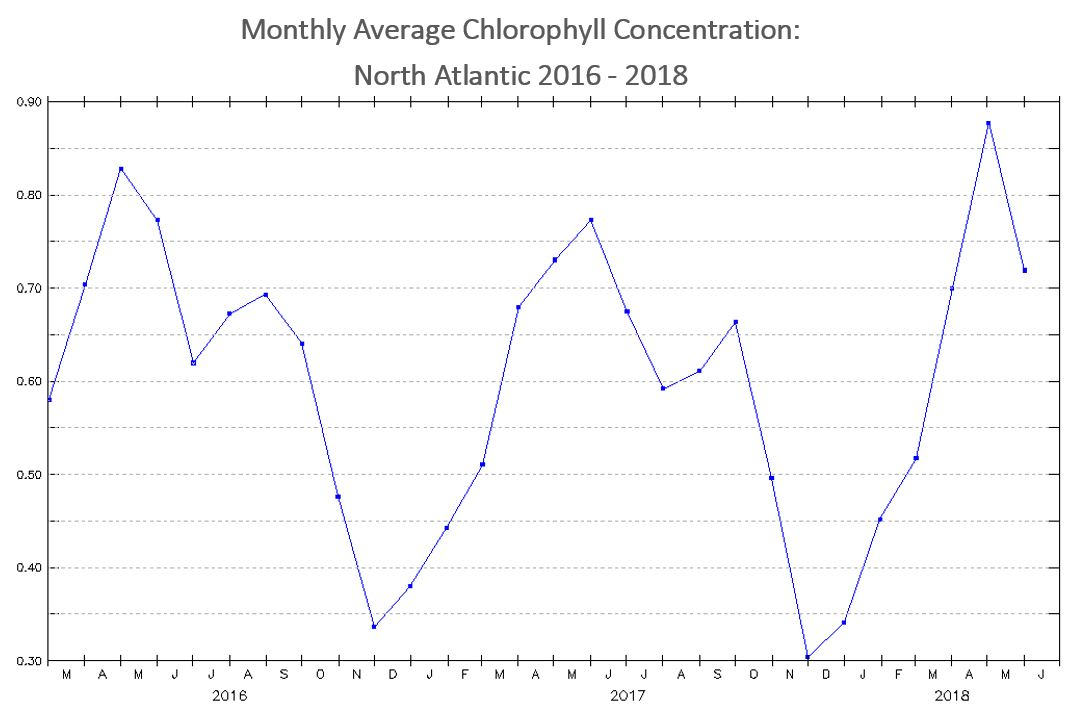Energy powers the transformation and movement of matter in all Earth system processes. Earth’s major cycles connecting matter found within the different spheres include the energy cycle, the water cycle, and the cycles of important individual elements (e.g., carbon and nitrogen).
>> Read More >>
Just one moment,
loading Earth as a System...
Featured Mini Lessons
-
-
-
-
-
-
-
-
-
Grade Level: 6-8
Students review a visualization showing a global view of the top-of-atmosphere longwave radiation from January 26 and 27, 2012. They review the supporting text and analyze the data in the visualization to answer questions.
Grade Level: 6-8
This NASA visualization shows sea surface salinity observations (September 2011-September 2014). Students review the video and answer questions.
Grade Level: 6-8
Students review the NASA video showing biosphere data over the North Atlantic Ocean as a time series animation displaying a decade of phytoplankton blooms and answer questions.
Grade Level: 6-8
Students review a video showing how the ocean is warmed by solar energy. This is the first video of a four-part series on the water cycle, which follows the journey of water from the ocean to the atmosphere, to the land, and back again to the ocean.
Grade Level: 6-8, 9-12
This mini lesson engages students in watching a NASA video related to accumulated dust that makes the trans-Atlantic journey from the Sahara Desert to the Amazon rainforest using NASA's CALIPSO satellite.
Grade Level: 6-8
Students review a video showing a global view of the top-of-atmosphere shortwave radiation from January 26 and 27, 2012 and answer the questions that follow.
Grade Level: 6-8, 9-12
This mini lesson engages students by watching a NASA video related to seasonal chlorophyll concentration as it relates to net radiation using NASA's Aqua satellite. Students will examine the model and answer the questions.
Grade Level: 6-8, 9-12
In this mini lesson, students explore the relationship of chlorophyll and solar radiation by analyzing line graphs from the North Atlantic during 2016-2018.
Grade Level: 6-8, 9-12
Students learn how to estimate the "energy efficiency" of photosynthesis, or the amount of energy that plants absorb for any given location on Earth.
Previous
Next
Grade Level: 6-8
Students review a visualization showing a global view of the top-of-atmosphere longwave radiation from January 26 and 27, 2012. They review the supporting text and analyze the data in the visualization to answer questions.
Grade Level: 6-8
This NASA visualization shows sea surface salinity observations (September 2011-September 2014). Students review the video and answer questions.
Grade Level: 6-8
Students review the NASA video showing biosphere data over the North Atlantic Ocean as a time series animation displaying a decade of phytoplankton blooms and answer questions.
Grade Level: 6-8
Students review a video showing how the ocean is warmed by solar energy. This is the first video of a four-part series on the water cycle, which follows the journey of water from the ocean to the atmosphere, to the land, and back again to the ocean.
Grade Level: 6-8,
9-12
This mini lesson engages students in watching a NASA video related to accumulated dust that makes the trans-Atlantic journey from the Sahara Desert to the Amazon rainforest using NASA's CALIPSO satellite.
Grade Level: 6-8
Students review a video showing a global view of the top-of-atmosphere shortwave radiation from January 26 and 27, 2012 and answer the questions that follow.
Grade Level: 6-8,
9-12
This mini lesson engages students by watching a NASA video related to seasonal chlorophyll concentration as it relates to net radiation using NASA's Aqua satellite. Students will examine the model and answer the questions.
Grade Level: 6-8,
9-12
In this mini lesson, students explore the relationship of chlorophyll and solar radiation by analyzing line graphs from the North Atlantic during 2016-2018.
Grade Level: 6-8,
9-12
Students learn how to estimate the "energy efficiency" of photosynthesis, or the amount of energy that plants absorb for any given location on Earth.
Energy and Matter landing page. Explore maps, graphs, data, and related education resources. These resources include lesson plans, mini lessons, activities, and datasets for teachers and students.


